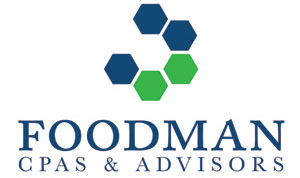Is calculating the 20 percent deduction for pass-through businesses simple? was published by JD Supra on 9/25/18.
Section 199A of the Internal Revenue Code provides Individual Taxpayers a deduction for the Qualified Business Income (QBI) of a qualified trade or business operated directly or through a pass-through entity. The types of entities and professionals that qualify for a QBI pass-through and are able to get the 20 percent tax deduction remains somewhat unclear to many; even after the publication of the Treasury Department’s 184-page Regulation on August 8, 2018 that will affect individuals, partnerships, S corporations, trusts, and estates engaged in domestic trade or business.
IRS Trying to keep it Simple
According to IRS’ Frequently Asked Questions published on August 8, 2018:
- Eligible Taxpayers may be entitled to a deduction of up to 20 percent of qualified business income (QBI) from a domestic business operated as a sole proprietorship or through a partnership, S corporation, trust or estate.
- For Taxpayers with taxable income that exceeds $315,000 for a married couple filing a joint return, or $157,500 for all other Taxpayers, the deduction is subject to limitations arising from the type of trade or business, the Taxpayer’s taxable income, the amount of W-2 wages paid by the qualified trade or business and the unadjusted basis immediately after acquisition (UBIA) of qualified property held by the trade or business.
- Income earned through a C corporation or by providing services as an employee is not eligible for the deduction.
- Eligible Taxpayers may also be entitled to a deduction of up to 20 percent of their combined qualified real estate investment trust (REIT) dividends and qualified publicly traded partnership (PTP) income. This component of the section 199A deduction is not limited by W-2 wages or the UBIA of qualified property.
The sum of these amounts is referred to as the “Combined Qualified Business Income” amount and the deduction:
- is the lesser of the combined QBI amount and an amount equal to 20 percent of the taxable income minus the Taxpayer’s net capital gain.
- is available for taxable years beginning after Dec. 31, 2017. Most eligible Taxpayers will be able to claim it for the first time when they file their 2018 federal income tax return in 2019.
- is available, regardless of whether an individual itemizes their deductions on Schedule A or takes the standard deduction.
Defining QBI:
- the net amount of qualified items of income, gain, deduction and loss from any qualified trade or business.
- Only items included in taxable income are counted.
- the items must be effectively connected with a U.S. trade or business.
- Items such as capital gains and losses, certain dividends and interest income are excluded.
Defining Qualified Trade or Business:
A qualified trade or business is any trade or business (but with two exceptions):
- A specified service trade or business (SSTB), which includes a trade or business involving the performance of services in the fields of health, law, accounting, actuarial science, performing arts, consulting, athletics, financial services, investing and investment management, trading, dealing in certain assets or any trade or business where the principal asset is the reputation or skill of one or more of its employees. This exception only applies if a Taxpayer’s taxable income exceeds $315,000 for a married couple filing a joint return, or $157,500 for all other taxpayers.
- Performing services as an employee.
If Taxpayers are Below the Threshold, the SSTB Does NOT apply, but if Taxpayers are “OVER” the Threshold, then……..
- the deduction may be limited based on whether the business is an SSTB
- the deduction may be limited based on the W-2 wages paid by the business and the unadjusted basis of certain property used by the business
- limitations are phased in for joint filers with taxable income between $315,000 and $415,000, and all other taxpayers with taxable income between $157,500 and $207,500
- the threshold amounts and phase-in range are for tax-year 2018 and will be adjusted for inflation in subsequent years
The Regulations provides some “further clarification” of SSTBs definitions as follows:
- “the performance of services in the field of health does not include the operation of health clubs or health spas that provide physical exercise or conditioning to their customers, payment processing, or research, testing, and manufacture and/or sales of pharmaceuticals or medical devices”
- “the provision of services in the field of law does not include the provision of services by printers, delivery services, or stenography services”
- “the field of accounting does not include payment processing and billing analysis”
- “the field of actuarial science does not include the provision of services by analysts, economists, mathematicians, and statisticians not engaged in analyzing or assessing the financial costs of risk or uncertainty of events”
- “the performance of services in the field of performing arts does not include the provision of services that do not require skills unique to the creation of performing arts, such as the maintenance and operation of equipment or facilities for use in the performing arts. Similarly, the performance of services in the field of the performing arts does not include the provision of services by persons who broadcast or otherwise disseminate video or audio of performing arts to the public”
- “the field of consulting does not include consulting that is embedded in, or ancillary to, the sale of goods if there is no separate payment for the consulting services’
- “the performance of services in the field of athletics does not include the provision of services that do not require skills unique to athletic competition, such as the maintenance and operation of equipment or facilities for use in athletic events. Similarly, the performance of services in the field of athletics does not include the provision of services by persons who broadcast or otherwise disseminate video or audio of athletic events to the public”
- “the definition of financial services to services typically performed by financial advisors and investment bankers and provides that the field of financial services includes the provision of financial services to clients including managing wealth, advising clients with respect to finances, developing retirement plans, developing wealth transition plans, the provision of advisory and other similar services regarding valuations, mergers, acquisitions, dispositions, restructurings (including in title 11 or similar cases), and raising financial capital by underwriting, or acting as the client’s agent in the issuance of securities, and similar services. This includes services provided by financial advisors, investment bankers, wealth planners, and retirement advisors and other similar professionals, but does not include taking deposits or making loans”
- “the field of brokerage services includes services in which a person arranges transactions between a buyer and a seller with respect to securities for a commission or fee. This includes services provided by stock brokers and other similar professionals, but does not include services provided by real estate agents and brokers, or insurance agents and brokers”
Don’t be a victim of your own making
The proposed Treasury Regulations could create further confusion for the participants in the Specified Services trade or Businesses category. If you are a participant in the SSTB, consult your tax specialist.
https://www.jdsupra.com/legalnews/is-calculating-the-20-percent-deduction-26991/





